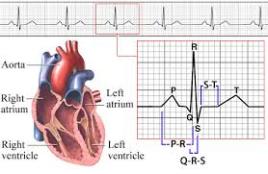So I started out in Cardiac Telemetry as a new grad. I knew right out of school that I wanted to have Telemetry as a foundation for my practice. If you are starting out as a new grad in the US, Tele is a great start. From Tele it is much easier to navigate into specialty areas than moving from Med-Surg. After about 18 months I was fatigued with my job. I worked on the biggest unit in the hospital which was split into regular Tele, Med-Tele, VIP unit, and observation unit; as well as being floated to MICU, CVSD, Maternity, Med-surg and the new sister hospital which had opened a good 20 min drive from the main campus. I had started working on days as a new grad as I thrive under pressure. I learned so much in the first 6 months and definitely found my groove, understanding my patients, documentation and the docs. I found that I really enjoyed working the observation unit as it was high turn over, fast paced, and a bit of a mystery of what the ER was bringing up. One time I had a pt come up dx: Chest Pain. I gave her morphine, did an EKG, put her on O2, call the doc – she was immediately sent to the cath lab. This pt should have been a cardiac alert, turned out that she had 100% occlusion in the Circumflex – she was dying. I loved that I was on the cusp of something, it was fast, it was more challenging than the other units and I liked it. After about 14 months on days, I switched to night shift. Our night shift staff was thin, a lot had left and they were struggling, and to be honest, I needed the pay increase. So I did nights for the last 5 months of my job and started looking for other opportunities.
I landed a job at another hospital, again it was a non-profit hospital, but in an affluent area. I was working in CV-Step Down, sister floor to CVICU post-CABG/TAVR pts mainly. I was thrilled that I was moving deeper into the cardiac specialty, this is what I wanted. After 3 months in my new job I wasn’t happy. I was working nights, the staff were burned out and it showed. I found that the acuity of my patients weren’t all that different from my prior job. Post-open heart really only meant, possible Afib – start Cardizem or Amiodarone drip, chest tubes – usually 2-4, Dermabond midline chest incision and leg donor site, and lastly a foley. There was nothing really interesting about it. The fun happened in the OR, ICU and then during the day when the chest tubes were pulled, I missed out on all of that and just ended up changing the chest tube dressing and drawing blood from the central line.
I started to feel depressed; I started dreading going to work. I wondered if I was looking for something better that didn’t exist. I thought nursing was this great expanse of possibilities, but here I was feeling crappy after changing jobs from a crappy position to another one. I considered if I just wasn’t made for nursing. I’ll be honest, I never planned on being a nurse, I didn’t grow up dressing up as a nurse and putting a stethoscope to my teddy bear – that wasn’t me. Life brought me to nursing, and my ability to take on a challenge, think critically, enjoy interacting with people, had made this a good choice for me, but now I was here in this place where I was unhappy and couldn’t quite figure out how to fix it. So I did what I thought I should do and start looking for another job. Now I was looking for a higher level: ER, ICU, ICU specialities.
Ironically I reapplied for some of the jobs I had applied for when leaving my first job. I really just felt like I had nothing to lose. I did get a call back for an ER job at a Level II Trauma hospital right on the highway. It is one hospital within a large hospital system, which means there are a lot of jobs available without actually quitting and having to learn a whole new system over again. So, I booked the interview and figured I’d wing it, at the end of the day, I still had a job, even if I didn’t get a new one, the bills would still get paid haha!
Stay Tuned for what happens next…!

If you like this post, please press like below! 🙂




 Pneumothorax: This is when air collects in the pleural space; can also be referred to as a “collapsed lung”. The air pressure in the pleural space does not allow the lung to reinflate.
Pneumothorax: This is when air collects in the pleural space; can also be referred to as a “collapsed lung”. The air pressure in the pleural space does not allow the lung to reinflate.
 Pleural Effusion: This is the accumulation of fluid in the pleural space. This can be caused by CHF, liver failure, kidney failure, peritoneal dialysis, pneumonia, lymphoma or breast cancer. Though most pleural effusions are caused by congestive heart failure, pneumonia, pulmonary embolism and malignancy.
Pleural Effusion: This is the accumulation of fluid in the pleural space. This can be caused by CHF, liver failure, kidney failure, peritoneal dialysis, pneumonia, lymphoma or breast cancer. Though most pleural effusions are caused by congestive heart failure, pneumonia, pulmonary embolism and malignancy.




